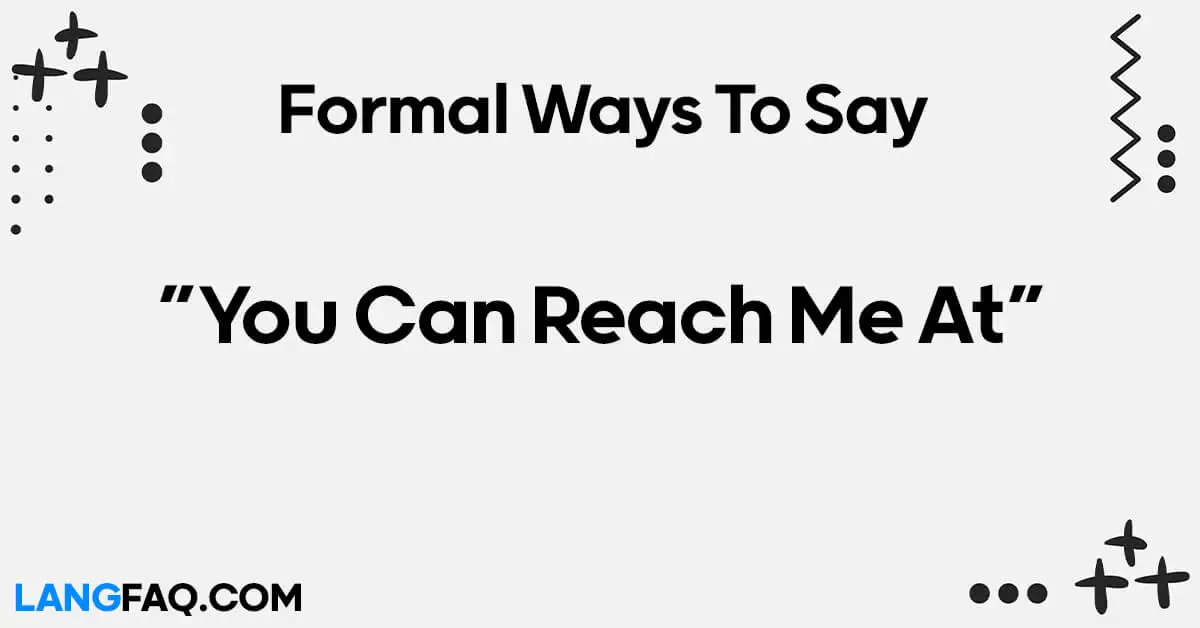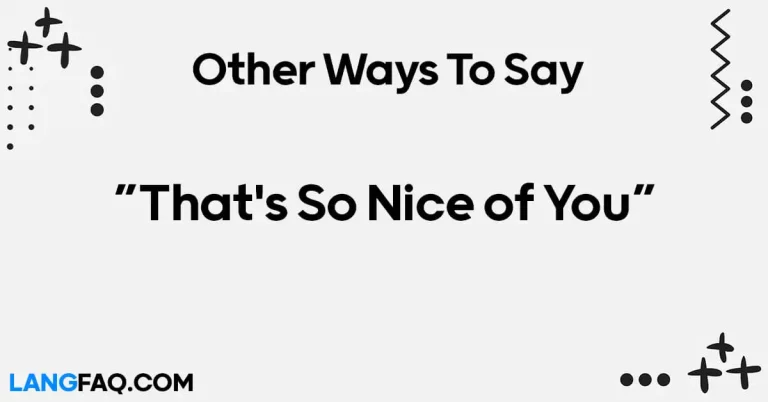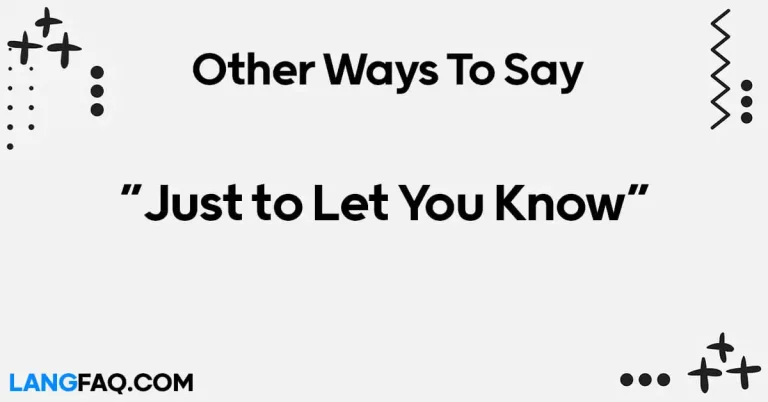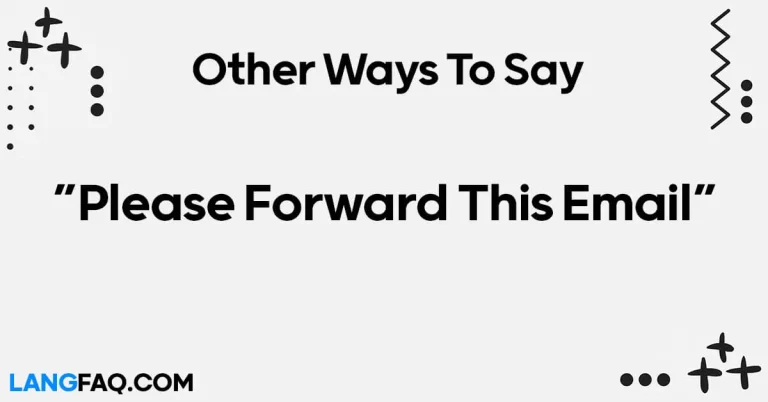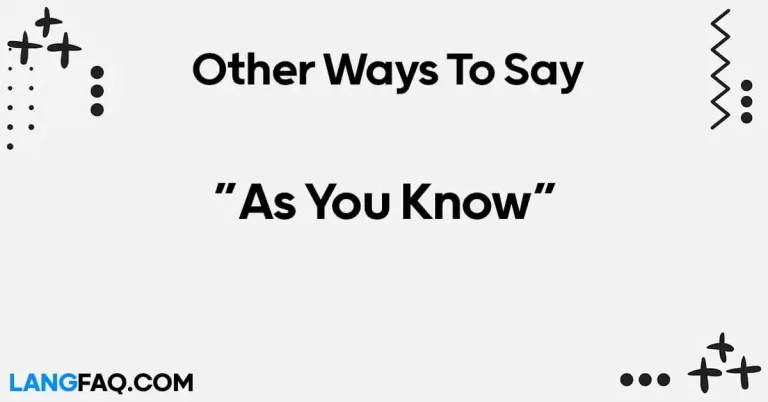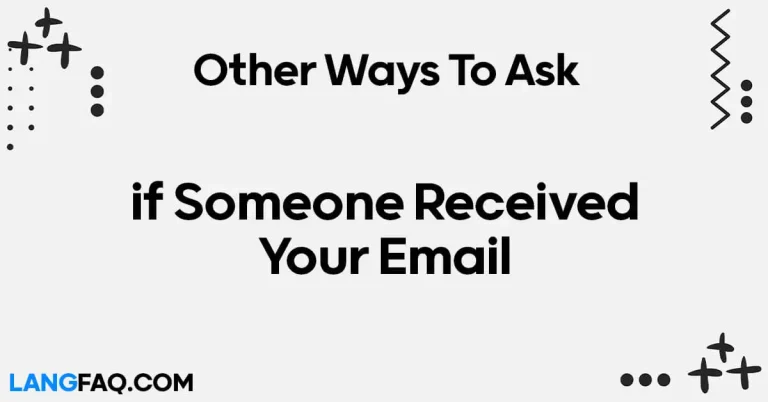In today’s fast-paced world, effective communication is key, especially when it comes to professional interactions.
This article delves into “12 Formal Ways to Say ‘You Can Reach Me At’,” providing readers with refined alternatives to this common phrase.
Whether you’re drafting a formal email or preparing a business card, knowing how to convey your contact information with elegance can set you apart.
We’ll explore a range of sophisticated expressions, each suited for different professional scenarios. Get ready to enhance your communication skills with these polished phrases.
Key Takeaways:
- Understanding the importance of formal language in professional settings.
- Exploring 12 sophisticated alternatives to ‘You Can Reach Me At’.
- Tips for choosing the right phrase based on context and audience.
Introduction to Formal Communication
Formal communication is the backbone of professional interactions. It’s not just about what you say, but how you say it. In this article, we’ll explore various formal ways to say “You Can Reach Me At,” enhancing both your written and spoken communication skills.
Why Formality Matters
In a professional setting, clarity and politeness are paramount. Using formal language is not only a sign of respect but also ensures your message is taken seriously.
12 Formal Ways to Say “You Can Reach Me At”
- “For correspondence, please contact me at”: Ideal for written communication, adding a touch of professionalism.
- “I am available for further discussions at”: Perfect for concluding business meetings or networking events.
- “My direct line for inquiries is”: Emphasizes a personal touch in business relations.
- “For any professional matters, reach me at”: Suitable for a general professional audience.
- “To continue this conversation, feel free to call”: A warm yet formal invitation for further discussion.
- “My office can be contacted at”: Imparts a sense of organizational structure.
- “You may reach my desk at”: Appropriate for office-based professionals.
- “For immediate assistance, please dial”: Useful for urgent or customer service-related contexts.
- “Should you require more information, contact”: Ideal for offering additional support or information.
- “For collaboration opportunities, connect with me at”: Encourages professional partnerships.
- “Please direct all inquiries to”: Streamlines communication for specific requests.
- “To schedule a meeting, please use”: Perfect for arranging appointments or interviews.
“For Correspondence, Please Contact Me At”
This phrase is perfect for written communication, especially in formal documents or emails. It’s respectful and sets a professional tone.
Contexts and Usage
- Ideal for email signatures or formal letters.
- Often used in business or academic settings.
Example
- In an email: “For correspondence, please contact me at [email protected]”
Variations
- Between Colleagues: “For any work-related queries, contact me at…”
- In a Mentor-Mentee Relationship: “For guidance-related communication, please reach out to me at…”
Tips
- Ensure the contact information provided is current and professional.
“I Am Available for Further Discussions At”
This phrase indicates a willingness to continue conversations, often used after meetings or networking events.
Contexts and Usage
- Suitable for concluding professional meetings.
- Can be used in a follow-up email or during a conference.
Example
- At the end of a meeting: “I am available for further discussions at [phone number].”
Variations
- Between Friends: “Feel free to ring me for more chat at…”
- In a Client Relationship: “For additional queries, I’m available at…”
Tips
- Pair this phrase with a friendly yet professional tone.
“My Direct Line for Inquiries Is”
This phrase adds a personal touch, suggesting that the receiver can directly contact you.
Contexts and Usage
- Great for business cards or email footers.
- Useful in customer service or sales roles.
Example
- On a business card: “My direct line for inquiries is [phone number].”
Variations
- In a Team Setting: “For team-related questions, call my direct line at…”
- For Personal Contacts: “You can always reach me directly at…”
Tips
- Reserve this for scenarios where direct contact is appropriate.
“For Any Professional Matters, Reach Me At”
This phrase is broad and can be used in various professional scenarios.
Contexts and Usage
- Useful in multi-purpose business cards or LinkedIn profiles.
- Appropriate for diverse professional interactions.
Example
- In a professional bio: “For any professional matters, reach me at [email address].”
Variations
- For Networking: “For collaboration and networking, reach me at…”
- In an Academic Setting: “For academic inquiries, contact me at…”
Tips
- Keep the tone formal yet accessible.
“To Continue This Conversation, Feel Free to Call”
This phrase is inviting and suggests openness to further discussion.
Contexts and Usage
- Perfect for ending professional meetings with a positive note.
- Can be used in emails to encourage ongoing dialogue.
Example
- After a meeting: “To continue this conversation, feel free to call me at [phone number].”
Variations
- Between Friends: “To catch up more, give me a ring at…”
- In a Creative Project: “For more brainstorming, let’s talk at…”
Tips
- Use this to foster a sense of ongoing collaboration.
“My Office Can Be Contacted At”
This phrase imparts a sense of professionalism and organizational structure.
Contexts and Usage
- Ideal for individuals who work within a larger organization.
- Can be used in formal letters or on websites.
Example
- On a website: “My office can be contacted at [office phone number].”
Variations
- For Customer Service: “For support, our office is reachable at…”
- In a Bureaucratic Setting: “For official matters, contact our office at…”
Tips
- Use when directing inquiries to a specific office location.
“You May Reach My Desk At”
This phrase is appropriate for office-based professionals, giving a direct line to their personal workspace.
Contexts and Usage
- Suitable for internal company communications or business cards.
- Often used in corporate environments.
Example
- In an internal memo: “You may reach my desk at extension 1234.”
Variations
- For Close Colleagues: “Drop me a line at my desk at…”
- In a Formal Office Setting: “For formal inquiries, my desk can be reached at…”
Tips
- Best used in settings where individual desks are the norm.
“For Immediate Assistance, Please Dial”
Useful in urgent or customer service-related contexts, this phrase conveys a sense of urgency and readiness to help.
Contexts and Usage
- Common in customer service scripts or emergency contact information.
- Appropriate for situations requiring prompt responses.
Example
- In a support email: “For immediate assistance, please dial our helpline at [helpline number].”
Variations
- In a Crisis Situation: “In case of emergency, dial…”
- For Quick Queries: “For a quick response, please call…”
Tips
- Reserve this for situations where immediate action is needed.
“Should You Require More Information, Contact”
Ideal for offering additional support or information, this phrase is both formal and helpful.
Contexts and Usage
- Suitable for academic, professional, or service-oriented communication.
- Can be used in presentations, emails, or brochures.
Example
- In a presentation: “Should you require more information, contact me at [email address].”
Variations
- For Students or Trainees: “For further learning resources, contact…”
- In Customer Service: “For detailed product info, reach out at…”
Tips
- Use this to offer additional resources or support.
“For Collaboration Opportunities, Connect with Me At”
Encouraging professional partnerships, this phrase is ideal for networking and collaborative contexts.
Contexts and Usage
- Great for use in professional networking sites or at conferences.
- Suits individuals looking for partnership or collaborative projects.
Example
- On LinkedIn: “For collaboration opportunities, connect with me at [LinkedIn profile].”
Variations
- In a Creative Field: “For joint creative ventures, let’s connect at…”
- Among Professionals: “For business collaborations, I’m available at…”
Tips
- Tailor this for situations where you’re seeking partnerships.
“Please Direct All Inquiries To”
This phrase streamlines communication for specific requests or information, directing them to the appropriate channel.
Contexts and Usage
- Useful in organizational settings or for individuals managing multiple roles.
- Appropriate for email footers or information desks.
Example
- In an automated email response: “Please direct all inquiries to [specific email address].”
Variations
- For Event Organizers: “For event-related questions, direct inquiries to…”
- In a Corporate Setting: “For business inquiries, please forward to…”
Tips
- Use when filtering different types of inquiries to specific channels.
“To Schedule a Meeting, Please Use”
Perfect for arranging appointments or interviews, this phrase is both formal and specific.
Contexts and Usage
- Ideal for professionals who frequently schedule meetings.
- Can be used in email signatures or automated booking systems.
Example
- On a business card: “To schedule a meeting, please use [online scheduling link].”
Variations
- For Client Meetings: “To book a consultation, please use…”
- In an Academic Setting: “For office hours appointments, use…”
Tips
- Pair this with a direct link or clear instructions for ease of scheduling.
In conclusion, mastering these 12 formal ways to say “You Can Reach Me At” not only enhances your professional communication but also reflects your attention to detail and respect for the recipient. Whether you’re in a corporate setting, a creative field, or any professional environment, these phrases will help you convey your message with clarity and sophistication. Remember, effective communication is a key component of success in any field.
Is It Professional to Say “You Can Reach Me At”?
In the landscape of professional communication, the phrase “You Can Reach Me At” often arises as a straightforward way to share contact information. But is it professional enough for all business contexts? Let’s explore this question to guide you in navigating the subtleties of workplace communication.
The Nuances of Professionalism
Professionalism in communication is not just about what is said, but how it’s conveyed. The phrase “You Can Reach Me At” is undoubtedly clear and direct, but its level of formality can vary depending on the context and the relationship between the parties involved.
Appropriate Contexts
- Informal Meetings and Networking: In less formal business settings, such as casual networking events or informal meet-ups, “You Can Reach Me At” strikes the right balance between professionalism and approachability.
- Internal Company Communication: When communicating within your organization, especially with colleagues you interact with regularly, this phrase can be perfectly acceptable and professional.
Formal Alternatives
However, in more formal situations, or when dealing with external clients, higher-ups, or in a new professional relationship, a more formal tone might be more appropriate. In these cases, alternatives such as “For correspondence, please contact me at” or “I am available for further discussions at” elevate the language to match the formality of the situation.
Industry Variations
The acceptability of this phrase can also vary by industry. Creative fields may welcome a more relaxed tone, while traditional corporate environments might expect a higher degree of formality.
Email Signatures and Business Cards
In written communication like email signatures or business cards, “You Can Reach Me At” can be seen as too casual. Opting for more formal wording can enhance the professional appearance of your written correspondence.
Cultural Considerations
It’s also important to consider cultural differences in business communication. What’s deemed professional in one culture might be too informal in another. Adapting your language to suit these nuances is key to effective international communication.
Pros and Cons
- Pros: The phrase is clear, concise, and universally understood. It’s approachable and removes any ambiguity about how to contact you.
- Cons: It might lack the formality needed for certain professional interactions, potentially coming across as too casual in high-stakes or very formal business environments.
Expert Opinions and Dictionary Insights
Linguistic experts often emphasize the importance of matching your language to the context. Dictionaries like Cambridge and Oxford provide definitions that underscore its straightforward nature but don’t delve into the nuances of its use in professional settings.
Conclusion
In summary, while “You Can Reach Me At” is professionally acceptable in many scenarios, its suitability largely depends on the context, the audience, and the industry norms. Understanding these factors and knowing when to opt for a more formal alternative is a skill that can greatly enhance your professional communication effectiveness. Remember, the key to successful communication in any professional environment is adaptability and awareness of the subtleties of language.
Choosing the Right Phrase
Selecting the right phrase depends on your audience, the context, and the formality of the situation. It’s crucial to align your choice with these factors for effective communication.
Real-Life Application
Consider these phrases in different scenarios, like email signatures, business cards, or during a professional presentation. Each phrase has its unique place and can significantly impact the tone and perception of your communication.
Conclusion
Formal communication is an art, and choosing the right phrases can elevate your professional interactions. By incorporating these 12 formal ways to say “You Can Reach Me At,” you’re not only enhancing your vocabulary but also your professional image. Remember, in the world of business, it’s not just what you say, but how you say it that counts.

